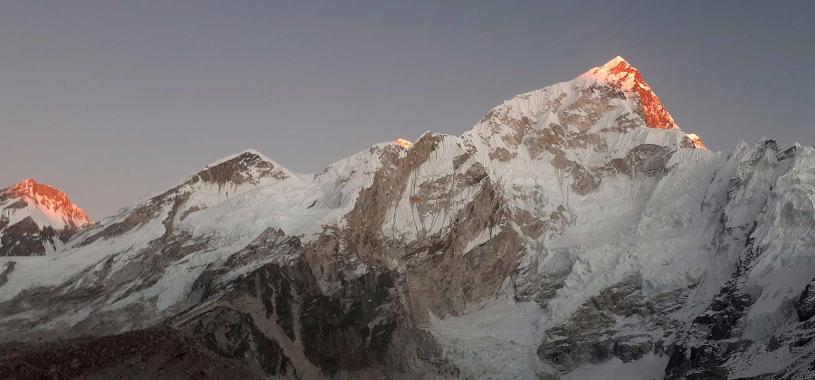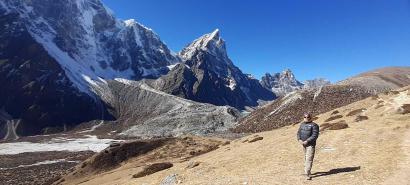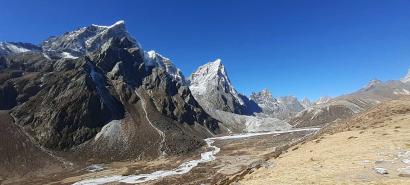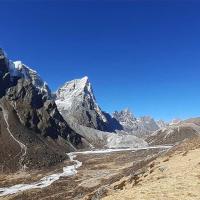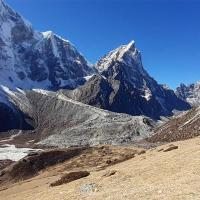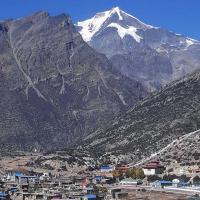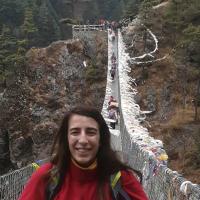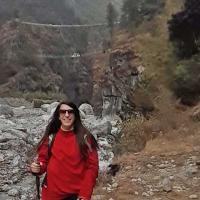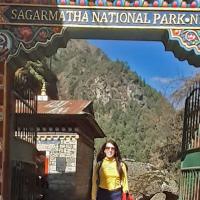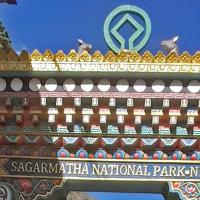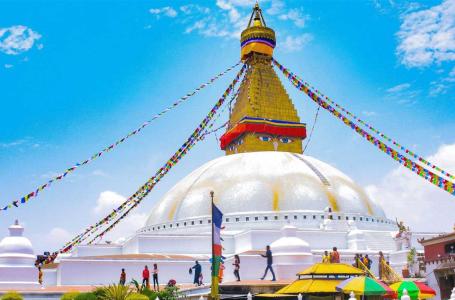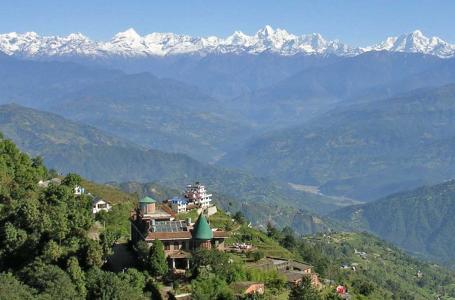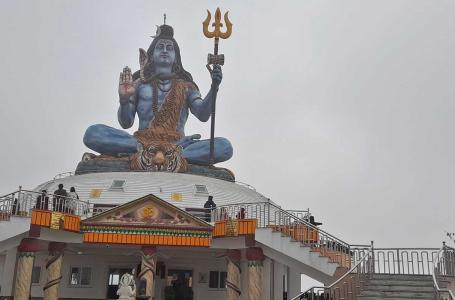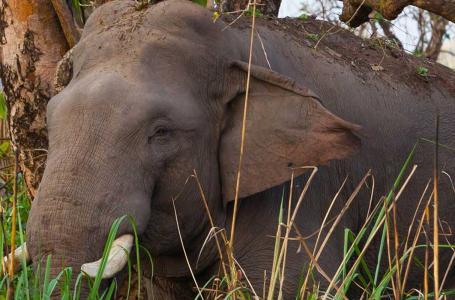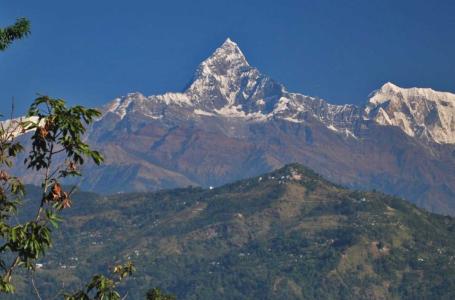- 01 Pax USD 1900 pp
- 02 to 05 Pax USD 1850 pp
- 06 to 10 Pax USD 1750 pp
- 11 to 15 Pax USD 1650 pp
Itinerary
In the peak season, there is a flight available from Ramechhap to Lukla. The journey from Kathmandu to Ramechhap takes approximately 5 hours by road, where you will need to catch a bus from Thamel around 1.30 am. You will arrive at Ramechhap airport around 6.30 am and then proceed to wait for your flight to Lukla. However, during off-peak times, you have the option to fly directly from Kathmandu airport to Lukla.
Early in the morning go to the airport for the flight to Lukla. It is a scenic flight over the gorgeous valleys with views of the mountains and ridges accompanying all the way up to the Lukla. While at times, you may be frightened by the sharp-looking ridges below. But, it is okay to have that thought for an adventurous experience.
On arriving at the airport at Lukla, with the shortest runway, we will start-off our trekking towards Phakding. We will walk along the silent trail, fenced by the farm-fields on both side, and pass by several Mani walls. There are suspension bridges, connecting the two isolated hills, where we will walk through in a hope of encountering a fabulous viewpoint. Consequently, the snowy peak of Kusum Kanguru could be witnessed at some point. Down the village of Ghat, we will finally make an appearance at the Phakding.
The trek to Namche is often designated as strenuous because the altitude plays its part here. The terrain is usual uphill and downhill and the views are not as fascinating as those from rest of the viewpoints, except the first view of Everest. Still, it is a nice walk to carry on.
From Phakding, we will traverse a suspension bridge, spanning across the Dudh Koshi River, and head towards the village of Toctoc where a nice and exhilarating waterfall triggers the soul of an adventurer.
Within a short while, another waterfall welcomes us to the village of Bengkar, famous for its crispy apple pies. Then, the trail continues to the Sagarmatha National Park (SNP), a UNESCO World Heritage Site, where the wildernesses are exposed and vibrant throughout the trail. An occasional sighting of the red panda is rumored, but it is a rare glimpse as red panda are a shy creature and hide in the dense bushes of the forest.
When we battle with the final ascent through the forest of SNP, the first view of Everest could be seen on a clear day. It is an inspiring view. Once we are out of the forest, a beautiful Kani Gate, with paintings of Buddhist deities, welcomes us to the vibrant village of Namche.
Namche is indeed a lively village. Its hundreds of years of trading history have paid a great deal in establishing this place as one of the epic stay stations in the Everest region. The beautiful street vendors and the smiling little Sherpas, across the village alleys, enhance the tone of this Everest town. It is worth exploring every single hotspot of Namche to gain worthwhile and real-life experiences.
In the daytime, we will catch a side trip to the villages of Khumjung and Khunde. These are the traditional cultural hamlets of Sherpas and still, have that classic charm to entice a city soul. The aesthetic monastery of Khumjung and the historical Hillary hospital are the highlights of this hike. Nevertheless, it is the Sherpas who make this region so beautiful and pure. Later, return to Namche for an overnight stay.
From Namche, we will follow the rightmost trail through the Tenzing Norgay Memorial Stupa to a place that gives the best views of the Ama Dablam, Lhotse Shar, Taboche, Kangtega, and Thamserku peaks. The uphill and downhill are frequent throughout the journey. Just before we cross a suspension bridge at Phunke Tenga, a chain of 7 water-driven prayer wheels surprises us. We will proceed through the pastures of Saso Kharka to make an appearance at the Tengboche.
Pay a visit to the Tengboche Monastery, the largest monastery of the Khumbu Region, and explore its artistically rich décor of the interiors and the exteriors. The Lamas are friendly enough to explain to you the history of the temple.
A trek to Dingboche is often considered as one of the best treks of the Everest Region. The trails are exposed uncovering the hidden beauties of the Himalayas. This trek is when the mountains fully introduce themselves in their best majesty. It is incredible.
For a while from Tengboche, the trails are quite boring with no views of the incredible mountains. But, as you cross the suspension bridge to be on the west side of the river, the whole panorama of the mountains appears visible to the eyes. It is unbelievable to expect such a heavenly place on Earth. The trails are narrow and often rise over the steep bluffs to take you to some of the more exquisite viewpoints. Most of the time, you walk parallel to the Imja Khola until arriving at Dengboche.
At a glance, Dingboche is a stone village as all the houses appear to be made from piles of stones, stacked one over the other. Every single house and the farm fields are bordered by the stone walls to protect them from the heavy winds.
Among them, a long continuous wall, with a broad base, fencing the farm fields has a unique story. Its formation is considered unintentional; when the farmers plowed their fields in the past, they separated the stones on the side of their fields. Later, these stones got piled up one over the other to form a strong wall.
From Dingboche, we will catch a side trip to Nangkar Tshang Hill through a pleasant forest of rhododendron and pine. We will encounter a small monastery, perhaps closed, during the first half of our hike. The views of the Makalu, Chopulu, Lhotse, Lhotse Shar and island peak are mesmerizing from the top.
The trail from Lobuche climbs over the grassy moraine from where the views of the lower valley and the few unnamed mountains appear mesmerizing. As in other days of trekking, the frequent ups and downs are ubiquitous.
We will continue along the ridge until Dughla. From there, the trail, suddenly, turns into a steep bluff. Each step feels like running in a marathon, but the serene views of the glaciers and mountains will keep you engaged. By the time we arrive at Lobuche, a beautiful peak of Nuptse will be waiting to welcome us.
From Lobuche, we will leave our hotel in the darkness itself because the icy winds from the glaciers will gain high speed in the morning, and it becomes difficult to cross the ridge. Most of today’s walk is along the ridge with views covered by the darkness. A shiny snowy pyramid, on the north, will make your day a very exciting one.
When we finally arrive at Gorakshep, we will proceed towards the Kalapatthar for a sunset glimpse of the whole mountain panorama of the Everest region. The view from the Kalapatthar is so amazing that each of the explorers has a distinct way of expressing beauty. The prominent peak of Everest is the highlight from the Kalapatthar, while other countless peaks, of uneven heights, are interspersed randomly below it on the east, west, and the south. These mountains create a vibrant atmosphere. Later, we will return to Gorakshep.
Early in the morning, we will hike to the Everest Base Camp. At a glance, the base camp appears to be a vast meadow, covered by a thick layer of snow. All the views will be covered by the haze. The only thing that is visible will be the tents of the Everest summitters, who are preparing for their final ascent to the top. However, these facts are ignorable in front of the feeling of being on top of the world.
Later, we will return to Gorakshep, have lunch, and then, proceed downwards towards the Lobuche. Instead of retracing the steps back to Dingboche, we will follow the other path that leads to the Dzongla. This way, the views grow beautiful and even more thrilling as you will encounter a cool blue lake of Chola Tsho on the way. The Chortens, lined up on the trail, will enhance the quality of the views, all around.
The first part of the trail is quite daunting, but as you progress over the rocky trails, your fear gets overpowered by the exhilarating views of the mountains. The closer you approach the Cho La Pass, the trail turns icy and slippery.
Many trekkers require crampons to pass through this, but with great care and concentration, you can cross this in your hiking boots as well (in good weather conditions). As you rise to the top of the Cho La pass, the views are worthwhile. The peaks of Gokyo, Kyajo Ri, Lobuche, Everest, Nuptse, and Lhotse are excellent from this point. Without much delay, we will progress, gradually, downwards towards the moraine. Through the Thangnak Kharka (pasture), we will make an appearance at the Dragnag.
From Dragnag, the trail descends for a while and then ascends to the Ngozumpa glacier, the longest glacier in Nepal. Across the glacier, there is a beautiful valley of Gokyo, where blue lakes rule the hearts of the explorers.
The lake system of Gokyo is the highest lake system in the world. In this lake system, there are many turquoise ice lakes to see, but the Dudh Pokhari is considered to be the most serene and sacred lake. The water is clean and is surrounded by the snowy rocks on all sides. Being on Gokyo feels like being out of the world.
Gokyo Ri is the Kalapatthar of the Gokyo region. The views of the Cho Oyu, Ngozumba, and Gyachung Kang appear peaceful, undisturbed, and isolated from worldly urbanization and pollution. The views are good all around.
The peaks of Taboche and Everest are one of the highlights of this viewpoint. Later, we will descend to the Gokyo valley, have lunch, and then, descend to the Dole. The descent is much easier than the ascent. While going down the Gokyo, the incredible peaks of Cholatse, Taboche, and Kangtega will keep you engaged with the mountains.
This is a long day. To reach Namche from Dole, it takes over 6 hours of continuous walking. From Dole, we will walk down to the Phortse Thanga and then, to the classic village of Mong La, the birthplace of Lama Sange Dorje. We will follow the stone steps and Mani walls until we arrive at the Khumjung, a nice and warm village which we have visited earlier. From there, Namche is just a couple of kilometers away.
Namche to Lukla is the same trail that we have passed earlier. It is an easy day through the tranquil woods of the Sagarmatha National Park.
From Lukla, catch the earliest possible flight to Kathmandu. The flight is still thrilling.
Overview
The icy blue lakes of the Gokyo are one of the finest creations of Mother Nature. During this trek, you will come across some of the spectacular icy lakes overlooking the gorgeous views of the beautiful snow spires. The major highlight of this trek is the Everest Base Camp (EBC) (5,363 m), Kalapatthar viewpoint (sunset glimpse of the 360o panorama of mountains), Gokyo Lakes System (highest lake system in the world), Gokyo Ri (views comparable to the Kalapatthar), and Cho La Pass (one of the most dangerous but rewarding passes of the Everest region).
The overall trek is beautifully planned and has all the reasons to surprise you in every mode of the trail. You will encounter beautiful Chortens (Buddhist shrines), vibrant monasteries (gompas), intoxicating Mani walls (prayer-inscribed Buddhist stones), unstoppable prayer wheels (including the self-powered water-driven prayer wheels), welcoming prayer flags, and hanging suspension bridges on the way. They are the most serene and incredible things that will make your journey shine in a more powerful way.
This package can be attempted by anyone, both beginners and avid trekkers. But make sure you are acclimatized properly before proceeding to the higher altitude. A slow and gradual pace is the best technique for acclimatizing on the way. A slight hurry might ruin the overall adventure. We will guide you through every step of the trekking and teach you how to cross threatening passes like the Cho La pass. Make your journey more incredible with Trek Mania Nepal.
Planning Everest Base Camp Chola Pass Trek:
Planning for the Everest Base Camp Chola Pass Trek begins with a thorough assessment of your physical fitness and health, accompanied by consultations with healthcare professionals to ensure readiness for high-altitude trekking. Engaging in a structured fitness regimen that includes cardiovascular exercises, strength training, and hiking is essential to prepare your body for the challenges ahead. The acquisition of essential trekking permits, such as the Sagarmatha National Park Permit and TIMS card, is a prerequisite for entering the Everest region, followed by the acquisition of comprehensive travel insurance covering high-altitude trekking and potential emergencies. Selecting the right time for your adventure is crucial, with the spring and autumn seasons offering the most stable weather conditions.
Crafting a flexible itinerary spanning approximately 16-18 days, which includes vital acclimatization days at key stops like Namche Bazaar and Dingboche, is essential. Trekkers must also decide whether to engage local guides and porters to assist with navigation and load-bearing. Lastly, a well-prepared packing list, encompassing warm clothing, robust trekking boots, a quality down jacket, and personal essentials, ensures you are adequately equipped for the journey of a lifetime.
The best time to do the Everest Base Camp Chola Pass Trek?
The Everest Base Camp Chola Pass Trek is best done between the pre-monsoon (spring) season, which lasts from March to May, and the post-monsoon (fall), which lasts from September to November. This walk provides the attraction of flowering rhododendron woods, temperate temperatures, and extended daylight hours in the spring, making for excellent trekking conditions.
Autumn, on the other hand, brings in a period of consistent weather defined by clear sky, little rain, and moderate temperatures. The landscapes take on brilliant colors, providing beautiful panoramas.
Due to heavy rainfall, landslides, and poor visibility during the monsoon season (June to August), as well as extreme cold, heavy snowfall, and hazardous trail conditions during the winter months (December to February), spring and autumn are the preferred seasons for a safer and more enjoyable trek.
Foods and Accommodations:
The majority of the accommodations on the Everest Base Camp Chola Pass Trek are teahouses. These lodges provide simple but pleasant rooms with twin-sharing beds and communal restrooms. Some places provide electric blankets for warmth. Food selections are varied, with both local and foreign foods available, however, fresh vegetables should be avoided. During high seasons, it is essential to book lodgings in advance. Electronic device charging stations are provided for a charge, and there is intermittent mobile phone connection and Wi-Fi along the route. While rudimentary, teahouses and food choices in this spectacular Himalayan trip accommodate well to tourists.
Transportation:
Due to the lack of a direct flight from Kathmandu to Lukla, tourists must drive four hours (by shared Hiace Van) from Kathmandu to Manthali Airport. This is owing to strong traffic at Kathmandu's international airport throughout the months of October and November, as well as March and April.
After that, we'll fly directly from Ramechap Manthali Airport to Lukla Airport). A fee of USD 100 must be paid if you wish to travel by private vehicle. For the same-day flight, travelers should check out at about 1 a.m.
If you want to stay one night in Ramechap for the same-day flight, you will be charged an extra fee of roughly USD 20 per person.
After reaching Lukla, our trekking finally begins and we will then make our way to Phakding.
Our journey will finally end once you reach back to Lukla for your domestic flight to Ramechap and from there, you have to take another flight back to Kathmandu.
Alternatively, if you would like to escape the Lukla flight and embark on Everest Base Camp Chola Pass Trek via Classic EBC Route, there is an option for Everest Base Camp Trek via Jiri, to which we can customize this itinerary.
Necessary Permits & TIMS for Everest Base Camp Chola Pass Trek
For the Everest Base Camp Chola Pass Trek, three types of permits are required. The Trekker's Information Management System (TIMS) Card is no longer necessary. These permits can only be obtained through licensed agencies, and independent freelance guides cannot issue them.
Khumbu Pasang Lhamu Rural Municipality Entrance Permit
This permit is required to regulate and manage tourism activities in the Khumbu region. It applies to areas like Namche Bazaar, Tengboche, Dingboche, Lobuche, Gorakshep, and Gokyo.
Cost: NPR 3,000 per person (for foreigners)
Sagarmatha National Park Entry Permit
This permit grants access to Sagarmatha National Park, protecting its natural beauty, wildlife, and biodiversity. The funds collected are used for conservation and maintenance.
Cost: NPR 3,000 per person (for foreigners)
Gaurishankar Conservation Area Permit (Only for Jiri Route)
If starting the trek from Jiri, an additional Gaurishankar Conservation Area Permit is required. This is mandatory until reaching the Everest region.
Cost: NPR 3,000 per person (for foreigners)
📌 Note: All necessary permits are included in this trekking package.
Required Documents for Permits
A photocopy of your valid passport (must be valid for at least 6 months).
Highlights
- Stunning panoramas of Mt. Everest from Gokyo Ri.
- Dazzling vistas of Gokyo Valley's glacier lakes.
- Visit Everest Base Camp and Kala Patthar.
- Trek along off-the-beaten-path pathways filled with beautiful greenery in the Gokyo Valley.
- Thrilling flight to Lukla.
- Nepal’s biggest Khumbu and longest Ngozumpa glaciers
- Three great high passes (Kongma-La, Cho-La & Renjo-La pass)
- Hillary Museum
- Sagarmatha National Park
- Traditional Sherpa villages, culture, traditions & hospitality
Cost Details
- Airport pickup and drop service.
- Hotel in Kathmandu (Hotel chhimeki 2night).
- All food and accommodation during the trek.
- Transportation costs: Comfortable Drive from Hotel to Airport to Hotel.
- Experienced Government license holder English-speaking trekking guide.
- Trekking permits: Sagarmatha National Park Area fees.
- First aid medical box.
- T-shirt, Duffel Bag, and Trekking Map.
- Rescue Management Service.
- All Tax 13% VAT+10% Service charge)
- Farewell Dinner
- All kinds of Drinks.
- Visa fee to enter Nepal.
- International flight tickets and extra baggage charges.
- Extra night accommodation and meal costs in Kathmandu due to any change in the scheduled itinerary.
- All required trekking gear like sleeping bags and down jackets made available for rent.
- Travel insurance/ Rescue operation costs.
- All personal expenses (laundry, electronic device. charging cost,)
- Tip for guide and porters.
- Hot and cold Shower.
Trip Map
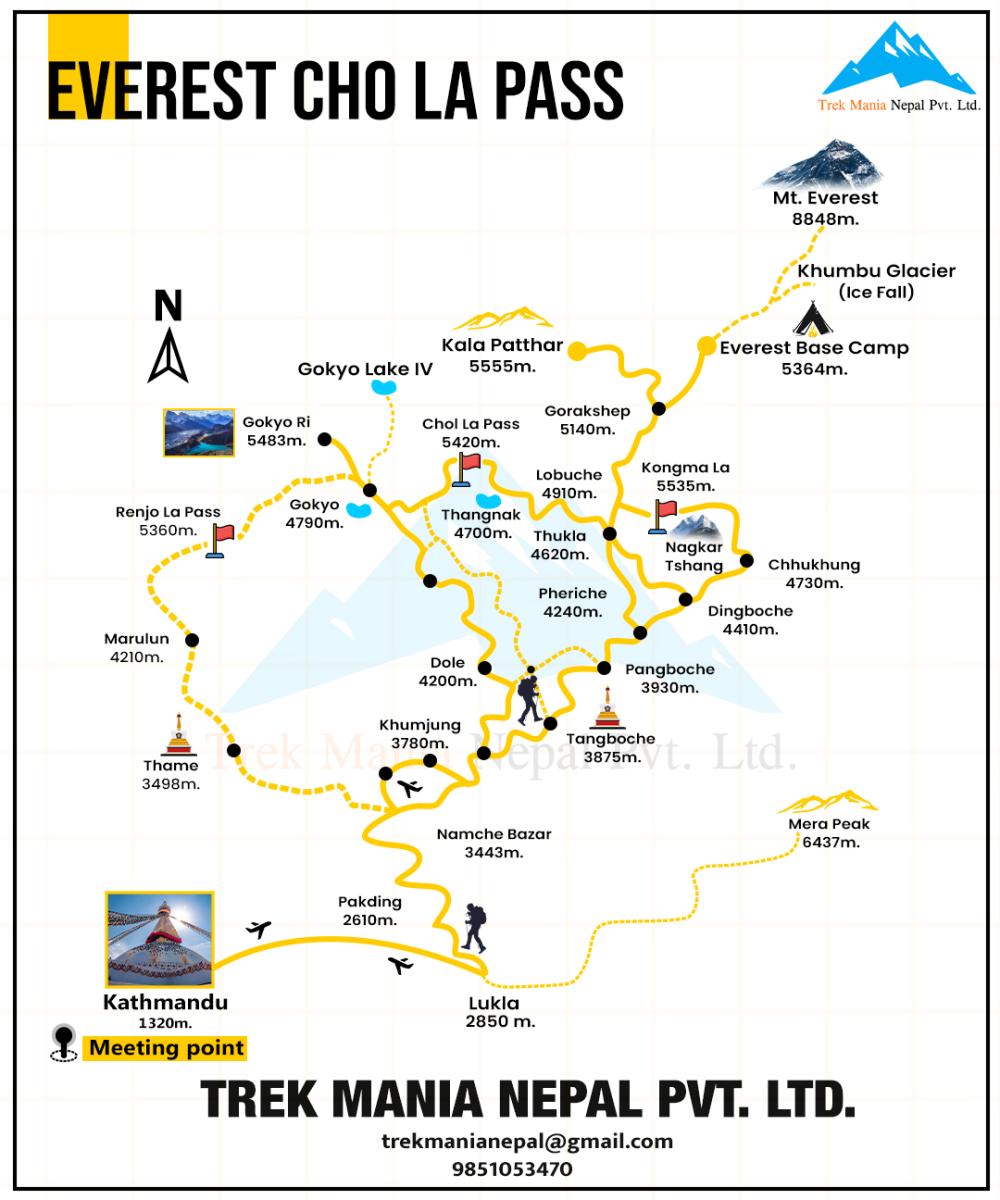
Equipment List
- Woolen shirts and thick sweaters.
- Jackets (Fiber or down).
- Waterproof jacket with hood or poncho.
- Tracksuit, Track shoes and Trousers.
- Thermal Underwear and Thermal Coat.
- 2 pairs of loose-fitting long shorts/ skirts.
- Pair of Gloves and sandals.
- Woolen hat and long-sleeved shirt.
- Lightweight walking boots.
- 2 pairs of thin socks and 2 pairs of woolen socks & neck gaiter.
- Snow glasses and sunglasses.
- Trekking Sticks and Duffle bag or kit bag to carry to gear while trekking.
- Some (small/large) plastic bags to separate clean clothes from dirty ones and some smaller plastic bags to dispose of garbage.
- Daypack bag to carry your personal requirements.
Water Bottle, water purifying tablets. - Towels, Umbrella (optional).
- Headlamp, Binoculars, Camera, trekking map and compass, reading materials, pencil, rubber, pen, notebook & moisturizer for lips, face body.
FAQs
The Everest Base Camp Chola Pass Trek is a challenging high-altitude adventure, ideal for experienced trekkers. It involves crossing the icy and steep Chola Pass (5,420m), trekking on rugged terrain, and walking 6-8 hours daily. At Trek Mania Nepal, we ensure proper acclimatization, expert guidance, and well-planned logistics, making your trek safe and rewarding.
With Trek Mania Nepal, you get expert guides, personalized itineraries, and the best teahouse accommodations along the route. Our team specializes in high-altitude treks and provides 24/7 support, flexible trip customization, and a hassle-free trekking experience. We guarantee an unforgettable Himalayan adventure with breathtaking landscapes, top-notch service, and safety as our priority.
The best seasons for this trek are spring (March-May) and autumn (September-November) when the weather is stable, and the trails are clear. The winter months (December-February) are extremely cold, making Chola Pass icy and dangerous. With Trek Mania Nepal, we help you choose the perfect time for an enjoyable and safe trekking experience.
Trekkers stay in teahouses with basic but comfortable twin-sharing rooms. Hot showers and WiFi are available in some places at an extra cost. Meals include Dal Bhat, pasta, momos, soup, porridge, and energy-packed snacks. At Trek Mania Nepal, we ensure you get hygienic food and the best available lodges for a comfortable stay.
Yes, trekkers need two main permits: the Sagarmatha National Park Entry Permit and the Khumbu Pasang Lhamu Rural Municipality Permit. If you extend to Gokyo, an additional permit may be required. Trek Mania Nepal handles all permit arrangements, so you can focus on enjoying your adventure.


